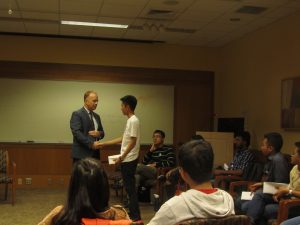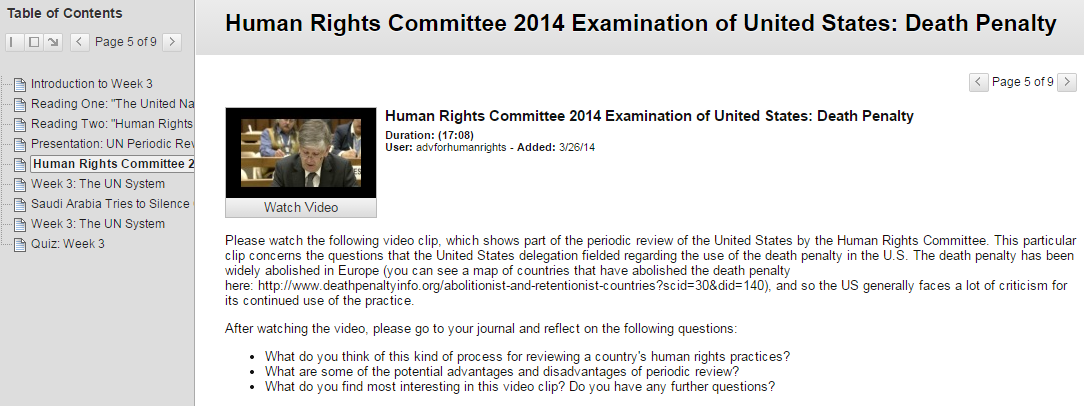More has been written or said about Bowling Green, Atlanta, and Sweden than about Quebec and Pakistan. Although by now exposed as a lie, about half of all Americans who support the travel ban executive order believe that the supposed Bowling Green massacre justifies limiting immigration from Muslim majority countries (see poll by Public Policy Polling as quoted in The Hill). Since February 18th, 2017 , the number of experts on Sweden and its immigration policy has risen palpably on social media. This phenomenon can be defined as propaganda: the “spreading of ideas, information, or rumor for the purpose of helping or injuring an institution, a cause, or a person” in an attempt to “further one’s cause or to damage an opposing cause” (Merriam Webster). False news stories can be found on both sides of the political spectrum. Maybe you have come across the claim that Melania Trump tried to sell her jewelry on the official White House page, have seen the picture of a boy in handcuffs, or have heard that police have burned down tipis of indigenous activists fighting the Dakota Access pipeline (all of these “fake news for liberals” are quoted in a Guardian article). The pictures circulated online connected to the two latter “news” stories are from 2005 and a 2007 HBO movie, respectively, and triggered outrage, the emotion most connected with retweeting and linking on social media (see the Smithsonian magazine’s article “What Emotion Goes Viral the Fastest?”). In this climate of propaganda, lies, and conspiracy theories, how do we teach what didn’t happen?
Let’s look at Sweden to think about this dilemma facing educators (and the press) today. During a rally in Florida on February 18th, 2017, Donald Trump spoke of an incident that had allegedly occurred in Sweden the night before. Being vague about the actual event, he clearly drew a connection to immigrants, and the recent increase of Muslim refugees in Sweden. While, the twittersphere had fun with the hashtags #incidentinSweden and #lastnightinSweden, Swedish officials tweeted both their disbelief about the statement as well as offered their own explanations of what had happened the day before in Sweden (nothing but a car chase and mechanical problems at a concert). The Swedish embassy offered to brief the President and his cabinet on Swedish migration policy, and news outlets were quick to report that in fact nothing had happened in Sweden the day before. Stephen Colbert tried to combine jokes about the lie with actual facts, quoted from Reuters, about declining crime statistics since 2005 (see video). But this was not the end of the story. Although Trump tweeted that he had quoted a Fox News story on Sweden and immigration (something that was apparently taken out of context and fabricated in a way that fit the anti-immigrant agenda of the clip. See The Guardian), the seed germinated. Conway, Spicer, and Trump have had success with sowing such seeds, retracting lies, but still being able to watch them grow. In reference to Sweden, self-proclaimed experts on Twitter took the statement and molded it into a conspiracy theory that alleged there was no proof of the incident because the Swedish government was covering it up.
Here is an additional problem: News outlets disproving a statement is not enough. There aren’t two sides to this story, as in “biased” reporting, there is in fact no story at all. So either nothing happened (truth) or somebody (i.e. a government) doesn’t want you to know that it happened (conspiracy theory). So what do educators do in this situation? A resource for the classroom is Mike Caulfield’s Web Literacy for Student Fact Checkers (available online). Caulfield presents four strategies to deal with news that need fact-checking: 1) “check for previous work” (Politifact and Snopes are mentioned as good sources for this step), 2) “go upstream to the source,” (that means check the quote’s sources) 3) “read laterally” (read related articles as well as other material on the page to determine veracity) and 4) “circle back” (repeat the process). He also introduces additional advice: “check your emotions” which may be the most important piece of advice. As the above mentioned Smithsonian article found, a news item that triggers anger often overrides any caution; we are more likely to share such an item, in a deliberate attempt to spread our outrage and convince others to be as outraged – quite a convincing explanation for the recent proliferation of “fake news.” But this is also where we can begin with our students: if something angers you, check it! If something appears to be a perfect quote, check it!
Returning to the Sweden case, what are concrete steps we can take with our students? First, check credible (multiple and international) news sources. Second, investigate the profiles of the people and news sources who are spreading the conspiracy theories. What else do they publish/tweet? Do they have an agenda? How would spreading a lie help their agenda? Third, go to the source. Research Swedish news sources, maybe European ones. What stood out to me here is that most right-wing, populist parties in Europe, haven’t supported the claim that Sweden is having massive problems because of their immigration policy. Why haven’t they? Wouldn’t this story help their cause? If it was true, they certainly would. So, we can conclude certain things about the validity of a statement from who isn’t tweeting/promoting it.
You may notice that I didn’t mention looking at actual crime statistics. This seems like the logical first step, but I would disagree. Facts don’t help dispel propaganda because the propaganda is going to maintain that such statistics are fake. If something is being covered up, statistics would also be fabricated. Therefore, fact finding may not be the solution to proving events or crises didn’t actually happen, particularly because there is no story there. Critical thinking and web literacy, which includes the ability to weigh the veracity of Twitter accounts, tweets, clips and other shareable items, need to be at the forefront of this effort (more information about this, including activities, in Caulfield’s book). This is where, I believe, we should focus our teaching efforts.
One final thought for the foreign language teacher. Students may not know what news sources from the countries they study are credible and it is harder to detect certain alarm bells in the target language. Big newspapers may become the first source for students but these are often tabloids. For example, the German tabloid Bild recently admitted that it fabricated a story about sexual assaults by immigrants (see New York Times). While I didn’t come across this story until several international publications, such as the New York Times, Washington Post, and The Guardian, exposed the lie, my students may have. This incident emphasizes the need for including critical news literacy in the foreign language classroom as well.











